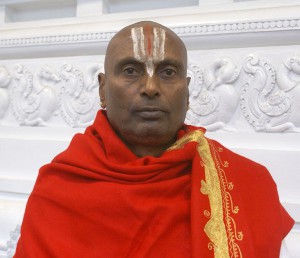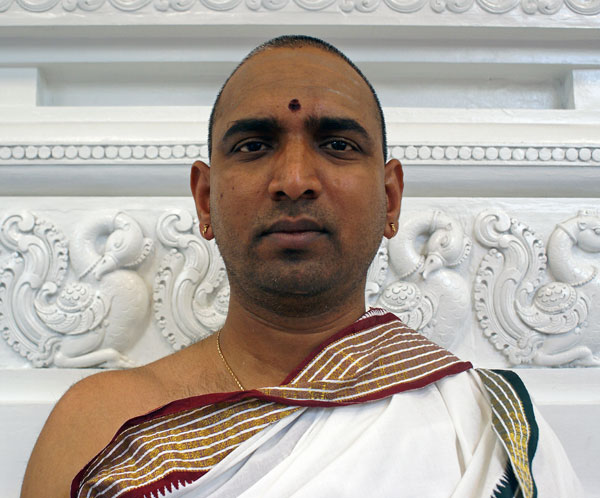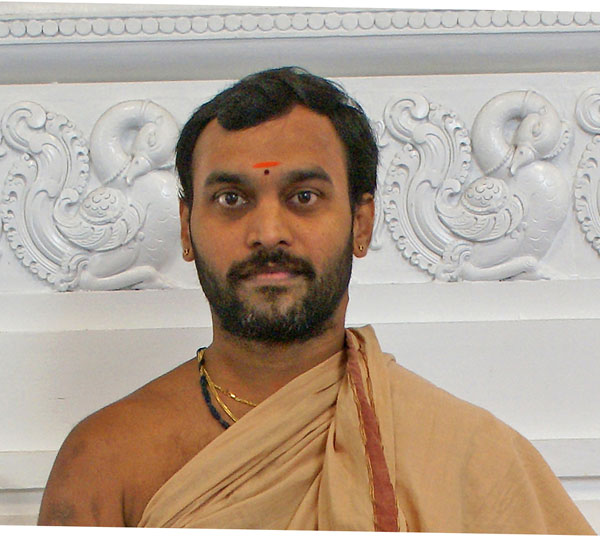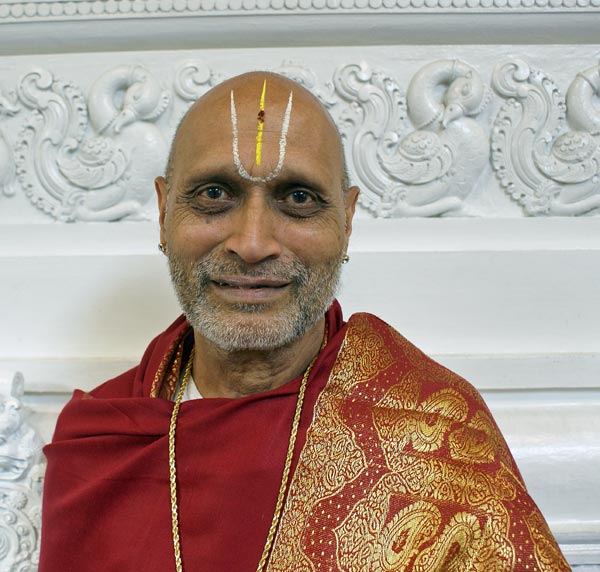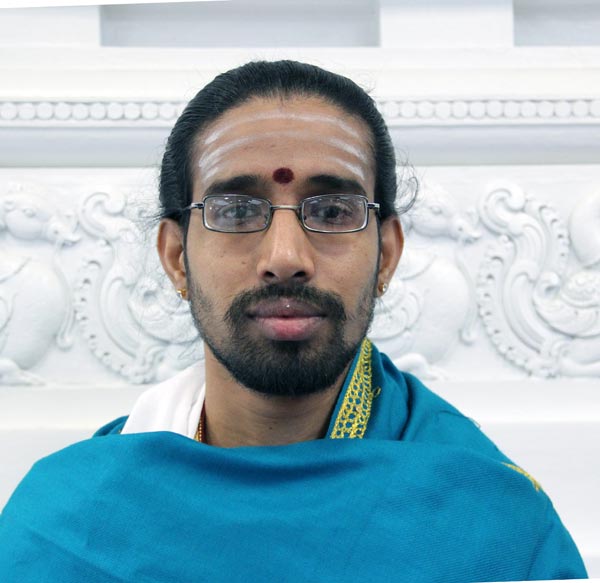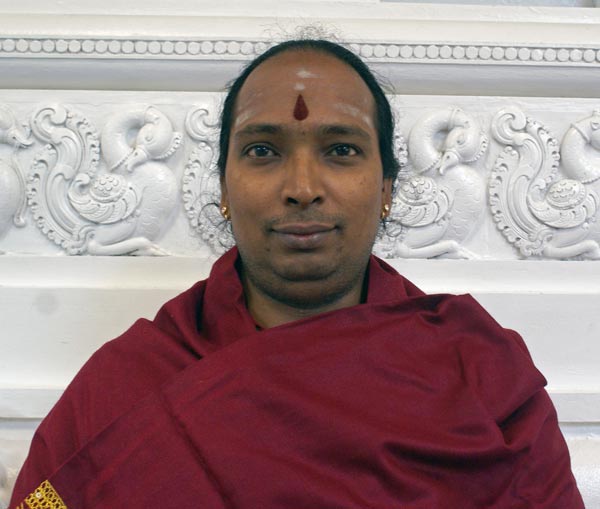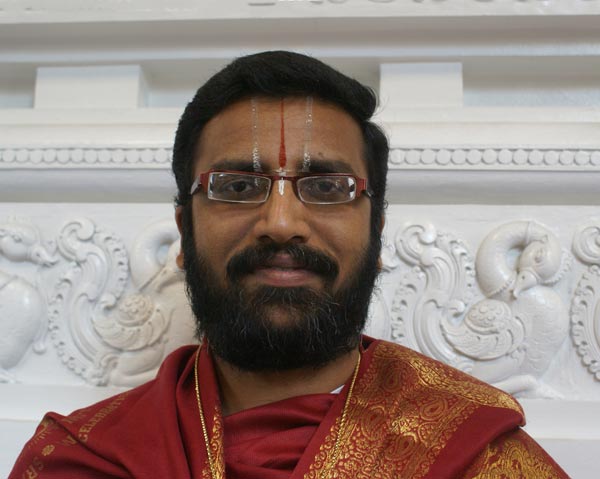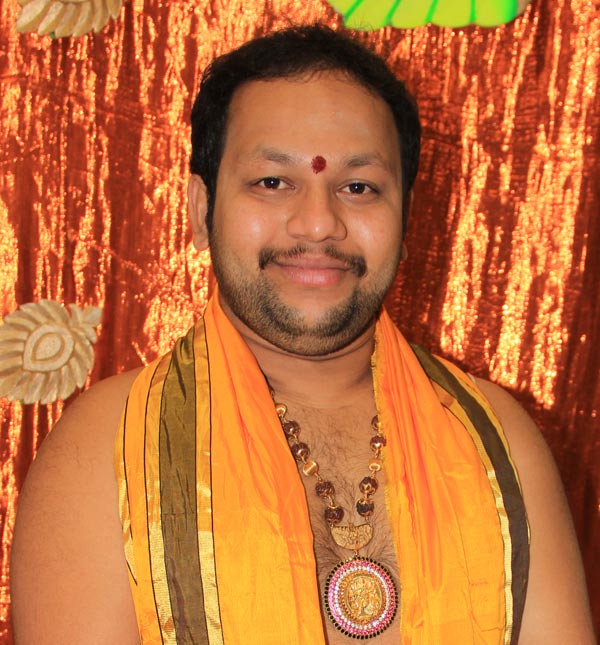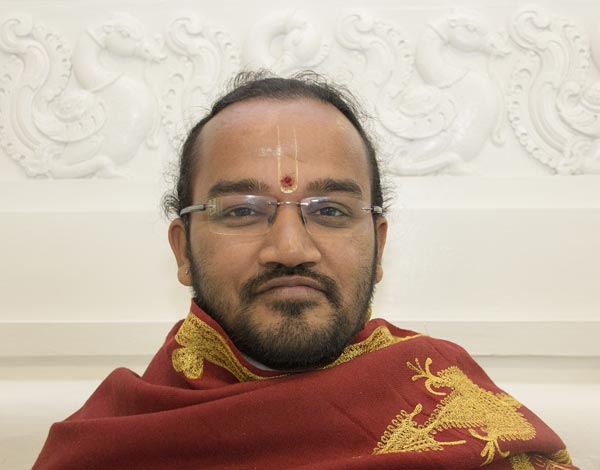18 Holy Steps
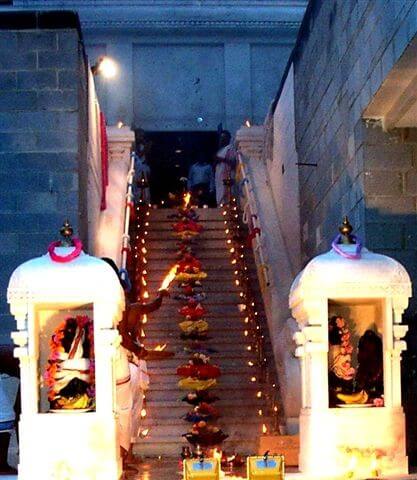
18 Holy Steps
SSVT is one of the few temples in the world with sanctified Eighteen Holy Steps leading to the Ayyappa Shrine. Ayyappa devotees in North America, who are unable to go on pilgrimage to Sabarimala, now have the unique opportunity of coming to Sri Siva Vishnu Temple and climbing the Eighteen Holy Steps with Irumudi and have holy Darshan of Lord Ayyappa. All devotees who observe the Vritham and carry the Irumudi can climb the Holy Steps. Many refer to the Ayyappa Shrine at SSVT as the ‘Sabarimala of the West’. During the Mandalam Season, Ayyappa devotees from all over the US and Canada undertake the strict Vritham which culminates in climing the holy steps and having the Nirmalaya Dharshan of the Lord.
Special Offering
Padi Puja is performed twice a year – on the first day of the Ayyappa Mandalam Season (Mandala Arambam) and during the Temple Annual Festival (Samvastara Mahotsavam). Each of the 18 steps are decorated with bright colored cloth, flowers, coconuts, bananas and lamps. The priest recites special prayers to the each individual steps. The devotees participate in this special puja by singing Bajans and PadiPattu (songs describing the 18 steps). The culmination of the Padi Puja is an enthralling sight – with all the lamps, the lit camphor and the flowers.
THE EIGTEEN HOLY STEPS
(Reprinted from Ayyappa Kumbabishekam Souvinier)
Sri Ayyappa Temple has 18 Holy Steps from the ground level to the sanctum sanctorum where the deity resides. These steps are considered holy because they are regarded as the extension of sanctum sanctorum.
The number 18 itself has great significance in Hindu philosophy. There are18 chapters in Bhagavad Gita; there are 18 Puranas; there are 18 battle techniques; Kurukshethra battle lasted for 18 days; Four Vedas, 6 Sutras, 5 Senses and 3 deities add up to 18. There are different interpretations to the significance of the 18 Holy Steps.
In one interpretation, the first seventeen steps symbolize the seventeen Vasanas(human traits) and the eighteenth step, symbolizes the last stage of evolution to the status of a Gnani(An individual who has achieved the ultimate state of enlightenment. The bad Vasanas have accumulated for generations and have to be eradicated by a slow and steady process. The good Vasanas have to be carefully cultivated. The combination of the elimination of the bad Vasanas and the development of the good Vasanas enables one to attain the level of a Gnani. To achieve the level of Gnani, one should have Internal Purification and External Purification.
- Agnana (Ignorance) or Avidya(Illiteracy) – In this stage a person is equivalent to an animal. The only way to evolve from this stage is by association with people better than oneself.
- False Prestige -Every human being is different from the next, and maybe inferior or superior to every other person in one way or another. However no one should have the opinion that one is superior to anybody else. This is a bad vasana, which has to be eliminated in the early stages of a person’s evolution, which is why it represents the second step.
- Dambh (pride) – Elimination of this bad vasana is the next stage, symbolizing the third step.
- Spite. Human beings have a tendency to blame others for any and all misfortunes and harbor ill will towards others as a result of this misconception. The sooner a person can get rid of this vasana the better of he will be.
- Crookedness – is the next vasana which has to be overcome. This trait is said to be developed as a result of one’s previous karma (deeds/misdeeds) and the only way to attain freedom from this vasana is by worshipping God. Kama(sensuousness) is the next vasana which has to be curbed by exercising extreme physical and mental discipline.
- Kroth(anger) – is a bad vasana and to surmount this tendency one should worship God and seek His Grace and Guidance. Bhayam(fear or cowardice) is bad vasana which very difficult to control. Absolute faith in the God Almighty can help to surmount fear. Shokam(sorrow) is caused by the tendency of human beings to be attached to worldly possessions and the weak minded are more susceptible to this vasana. Spiritual development can destroy this vasana.
- Kshama(patience) – is a good trait which can be attained only by the Grace of the Lord Almighty and can be sustained by continual worship of the Lord Almighty.
- Daya(kindness) – another good vasana. By simply practicing the philosophy that someone else’s need is greater than one’s own, a person can attain this good vasana, which is represented by the ninth step.
- Shanthi (calmness) – is the sister vasana of kshama, which can be achieved by satsanga(company of the good). Janapriathwam(to love all people alike) is achievable through Agnana yoga(enlightenment).
- Akrodham(no anger) – is very difficult to achieve and God’s Grace can help one to attain this stage Vairagyam. This vasana has two interpretations. It is the absence of worldly desires or passions , indifference to the world , asceticism, or it could mean sincerity of purposes, in which case a person would be successful in whatever activity he undertakes. In either case it is good vasana to have.
- Nirlobha – which is the ability to be able to do the right thing at the right time, to the right degree, without overestimating or underestimating.
- Datha(charity) – is a trait which should be cultivated to such an extent that one should be willing to sacrifice one’s owns needs to fulfill the needs of another. Charity should not be exercised as a means to gain name and fame.
- Gnanam(Enlightenment) – This final stage, symbolized by the eighteenth step, is attained when one is in tune with Brahma.
18 Holy Peaks: Another belief is that the 18 steps represents the Sabarimala and the 17 other peaks that surround Sabarimala.
- Kaalakettimala
- Injiparakkota
- Puthusserikkanam
- Karimala
- Neelimala
- Goundermala
- Ponnambalamedu
- Chittambalamedu
- Mayilaadum medu
- Thalappaaramala
- Nilakkalmedu
- Devarmala
- Sripadamala
- Ghadgimala
- Maathangamala
- Sundaramala
- Nagamala
- Sabarimala
The 18 Holy steps are the holy pathways for the Jeevaatma to reach the Paramaatma. Jeevaatma has to cross the 18 virtues to merge with paramaatma. The Holy steps 1, 2, 3, 4, and 5 represent the 5 Panjendriams: (Smell, Hearing, Sight, Taste and Touch). The Holy steps 6, 7, 8, 9, 10, 11, 12, and 13 represent the 8 Ashtaragas: Kamam, Krodham, Lobham, Moham, Madam, Matsaryam, Thanbha and Asuya. The Holy steps 14, 15 and 16 represent 3 Gunas: Thamas, Rajas and Satva. The Holy step 17 represents Vidya and the Holy step 18 represents Avidya. By observing stringent vruthams (austerities), the Ayyappa devotees called Ayyappas and Malikappurams, purify their body, mind and intellect and achieve the ultimate sanctity to make pilgrimage to Sabarimala carrying on their head the Irumudi containing the Pooja items, to climb the 18 holy steps and have the Darsan of Lord Ayyappa.



